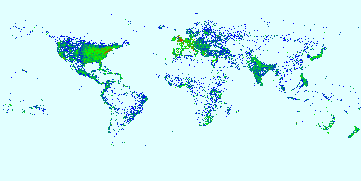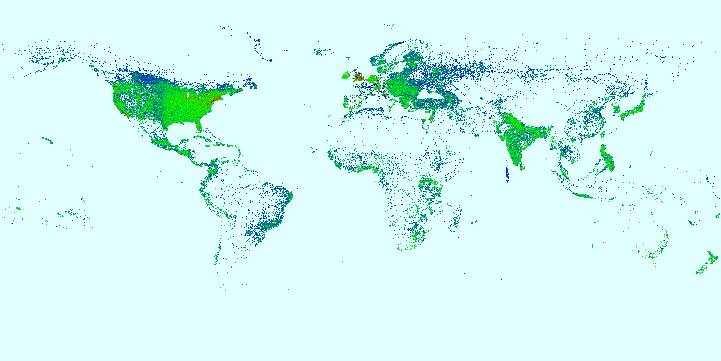The most recent news about Switzerland is good economic news:
the Swiss economy is judge to be more competitive than the United States'. A combination of smart, limited economic controls and a much more solid banking system has allowed the Swiss to reward capitalistic actions better than America.
While some underinformed observers may think of Switzerland as just another Western European country, it is very unique for that sector of the world. Decentralized government, functioning multiethnic population, and a conservative tint make Switzerland less like a Western European country and more like a working Afghanistan.
To understand how true this comparison is one must remember two things: 1) both countries are militaristic while practicing a form of isolationism and 2) Afghanistan was not always a basket case.
Membership in the Swiss military is mandatory and there are laws about citizens needing to own weapons. Meanwhile the average Afghan male knows how to use light weaponry with a fair chunk familiar with things ranging from heavy machine guns to anti-tank rockets. The Swiss have adopted a long and well known policy of neutrality. Meanwhile, Afghanistan has been concerned more about internal affairs and repelling foreigners rather than expanding its borders since the downfall of the
Durrani Empire. The only exception is the
Third Anglo-Afghan War in which the Afghans decided to go home after realizing it was impossible to rally themselves to invade Pakistan.
Since the establishment of a modern Afghanistan, meant to be a buffer between Russia and British India, there has been periodic turmoil but as the governments in Kabul became more established the less civil conflict there was. This is not to say Kabul ran the country, various local mayors and tribal leaders did, but everyone had a place and was generally content with it. During the first half of the Cold War both the USSR and United States gave aid to Afghanistan and help construct modern infrastructure. Social progression was very slow but an educated class was being developed. It was not till the Communist take over and the following Soviet invasion that modern Afghanistan became the war state it is now. This mirrors Switzerland where the various
cantons have much more power than the central government in Bern.
There are some differences though that currently hamper Afghanistan becoming the next Switzerland.
Neutrality versus interventionVarious European powers have prized Switzerland for its neutrality. It has been a buffer between powers, a good meeting place for sides whose politics would prevent any other form of communication, and its banking laws have allowed states to realize its better to have an economic partner rather than a unwilling subject. Afghanistan has been a puppet, though throughout much its history. First the Persian, Russian, and British Empires fought to have advantage over each other by holding sway over Afghanistan. Then during and after the Soviet invasion Iran, Pakistan, and various Central Asian countries have favored factions in a long running civil war. The various factions would not have the funding, human capital, or weaponry if it was not for foreign funders.
NationalityIn Switzerland one defines themselves as a Swiss first then by their canton or their canton and then Swiss. Either way both the first choice and the second choice are usually nearly equal. Intra-national alliances are looked down upon. One alliance of German Catholic cantons was destroyed
in a civil war by a united Catholic/Protestant alliance who feared the German Catholics were trying to unite against the rest of the country.
In the past Afghans were strongly tribal and ethnic divided yet rallied behind the idea of Afghanistan when foreigners threatened. The civil war has changed that. Now in the Pashtun south tribe is the most important factor with some ignoring Afghanistan and supporting a Pashtunistan that would unite parts of Afghanistan and Pakistan. Meanwhile the north is ethnic based with people identifying themselves as Tajik, Uzebek, or Hazara first while Afghan is a very distant second (or in the case of the Hazara a far third after ethnicity and political tribe).
How Afghanistan Could Work (Easier Said Than Done)Afghans have tended to prefer a weak government in Kabul that can provide goods while leaving them alone to allow organic developments in society. Developing a democratic republican system that allows for tribal inputs with most of the control resting in local hands (much like the original intent of the American constitution) with a ethnically shared federal government like Lebanon could appease those who want strong local control yet still desire to have a say in national events. This would also prevent either a Pashtun bloc or everyone-but-Pashtun alliance from dominating the national government. After the anti-Communist forces took Kabul, many Pashtuns who previously cared little about Kabul became alarmed and anti-government because of the new non-Pashtun leadership. Political satisfaction increases when everyone feels they have input into both the local and national levels.
The big step to winning the peace is having Afghanistan's neighbors realize that peace is much more beneficial than war. Afghanistan has perfect geography because it can link oil pipelines in a way that avoids Russia and it can connect Central Asia to the Indian Ocean ports in Pakistan. Also, peace in Afghanistan help Iran and Pakistan return their Afghan refugees back home. The absence of terrorists would also help Uzbekistan, Iran, and Pakistan in ending their insurgency which use(d) Afghanistan as a safe zone.
Afghanistan is not Switzerland and will always have its own culturally unique traits. However, culturally acceptable divisions of governance and neighbors accepting a neutral Afghanistan that should not be unduly swayed could make Afghanistan a sort of Swiss-like state with limited central government control but peaceful.














